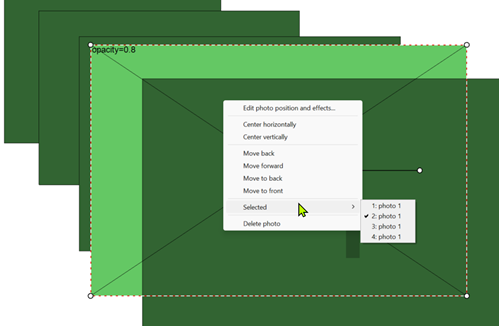Print compositing is applying different effects when adding photos to a print layout. Breeze Booth for iPad has a wide range of compositing tools available ranging from transparency and blurring to filters and blend modes. This gives huge creative control over the output without the need for Photoshop.
Right click on a photo in the print layout and select "Edit photo position and effects" to edit the effects applied to photos in the print layout. The "Photo Position and Effects" dialog will be displayed:
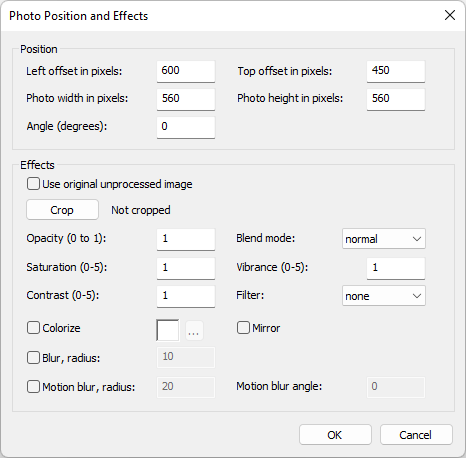
The "Effects" section controls the effects applied to each photo.
The "Use original unprocessed image" setting to use the original image taken by the camera before any processing such as green screen, AI background removal and AI special effects. This is useful if you want to show "before" and "after" images.
Click on the "Crop" button to crop the photo:

The left and width cropping values are expressed as a percentage of the image width e.g. to crop the image to display the left half set left to 0 and width to 50. Or to crop the image to display the right half set left to 50 and width to 50.
The top and height cropping values work in a similar way and are expressed as a percentage of the image height.
When an image is cropped its placement in the print layout editor does not change. Instead, the areas of the image that are cropped out are made fully transparent.
The opacity setting controls the transparency of the photo. Set this to a value between 0 (fully transparent) to 1 (fully opaque).
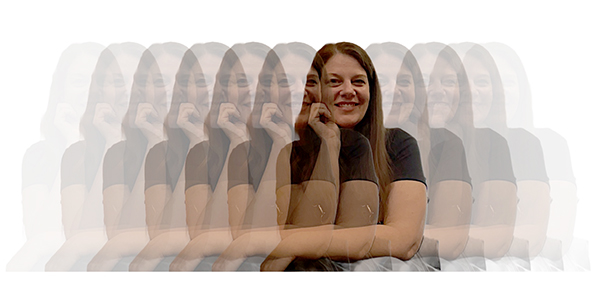
Single photo taken with AI background removal added to the print layout multiple times with different opacities
The blend mode controls how the photo is blended with the print layout.
The following blend modes are available:
normal, lighten,darken, overlay, screen, hard light,soft light, multiply, difference, exclusion, color dodge, color burn, hue, saturation, color, luminosity:
A detailed description of each blend mode is beyond the scope of this help file. Please see this wikipedia article for more information about blend modes: https://en.wikipedia.org/wiki/Blend_modes. Alternatively use an image editor such as Photoshop that supports levels and blend modes to see the effect of different blend modes on overlays applied to photos.
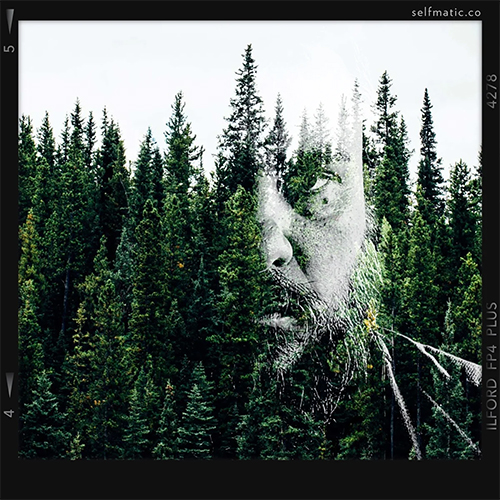
Print layout with trees as the background and one photo taken with AI background removal
which is added to the print layout with darken blend mode.
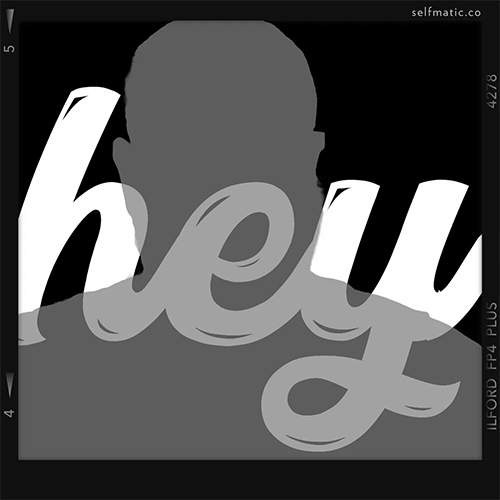
Photo taken with AI background removal then added to the print layout with contrast set to 0
and colorized to create a gray silhouette. Then added the "hey" overlay using a blend mode.
The saturation, contrast and vibrance settings adjust the appearance of the photo. The saturation setting adjusts the strength of the colors in the photo and ranges from 0, which has no color and gives grayscale images, through 5 which gives highly saturated images. The vibrance setting adjusts the saturation of an image while keeping pleasing skin tones. The contrast setting adjusts the contrast with values below 1 decreasing the contrast and values above increasing it. Set the saturation, contrast and vibrance to 1 to leave the photo unmodified.
The colorize option provide a simple way to convert a photo into shades of a single color. Enable the colorize checkbox then click on the "..." button to the right of the color swatch to change the color used to colorize the photo.
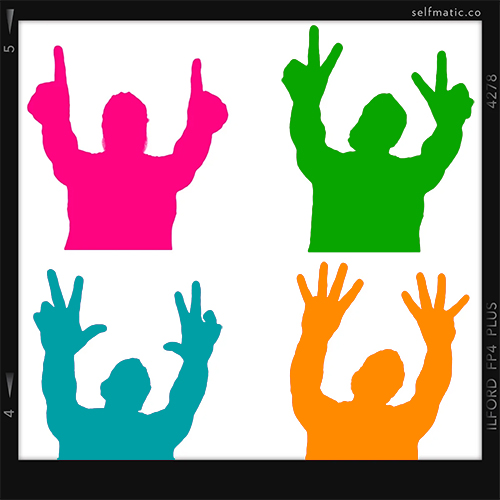
4 photos taken with AI background removal then added to the print layout with contrast set to 0
to produce a silhouette and colorized to magenta, green, cyan and orange
The filter dropdown list allows a color lookup table (or LUT) to be applied the the photo. Please see the section on filters for information on how to create filters.
The mirror option simply mirrors the image by flipping it horizontally.
The blur option applies gaussian blur to the photo. Select this option then edit the blur radius to control the amount the phot is blurred.
The motion blur option blurs the photo in a linear direction to give the impression of motion. Select this option and then edit the radius to control the length of the motion blur. Edit the motion blur angle to adjust the angle of the blur (the angle is in degrees).
Multiple effects can be applied to a photo e.g. applying motion blur to a photo and reducing its opacity to 0.5 to make it semi-transparent.
Placing a copy of a photo on top of the original photo can produce interesting effects e.g. the first photo is normal and the copy is semi-transparent with motion blur.
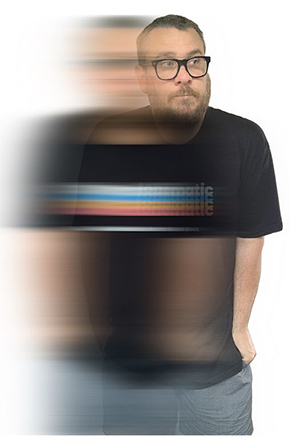
1 photo taken with a AI background removal added to the print
layout twice: once as a normal photo and then using motion blur
Many of the effects work best when used with AI background removal so that they only apply to people in the photo and don't apply to the background.
Tip: When several photos are placed on top of one another it can be difficult to select the right one. When this happens right click on the stack of images and move the mouse over the "Selected" menu entry to display a submenu listing the photos under the mouse pointer when you right clicked. The list will show the photos in descending order from the top most photo first in the list to the one at the bottom of the pile last in the list. The currently selected photo will have a checkmark against it. Left click the mouse on a different photo in the list to select it.
